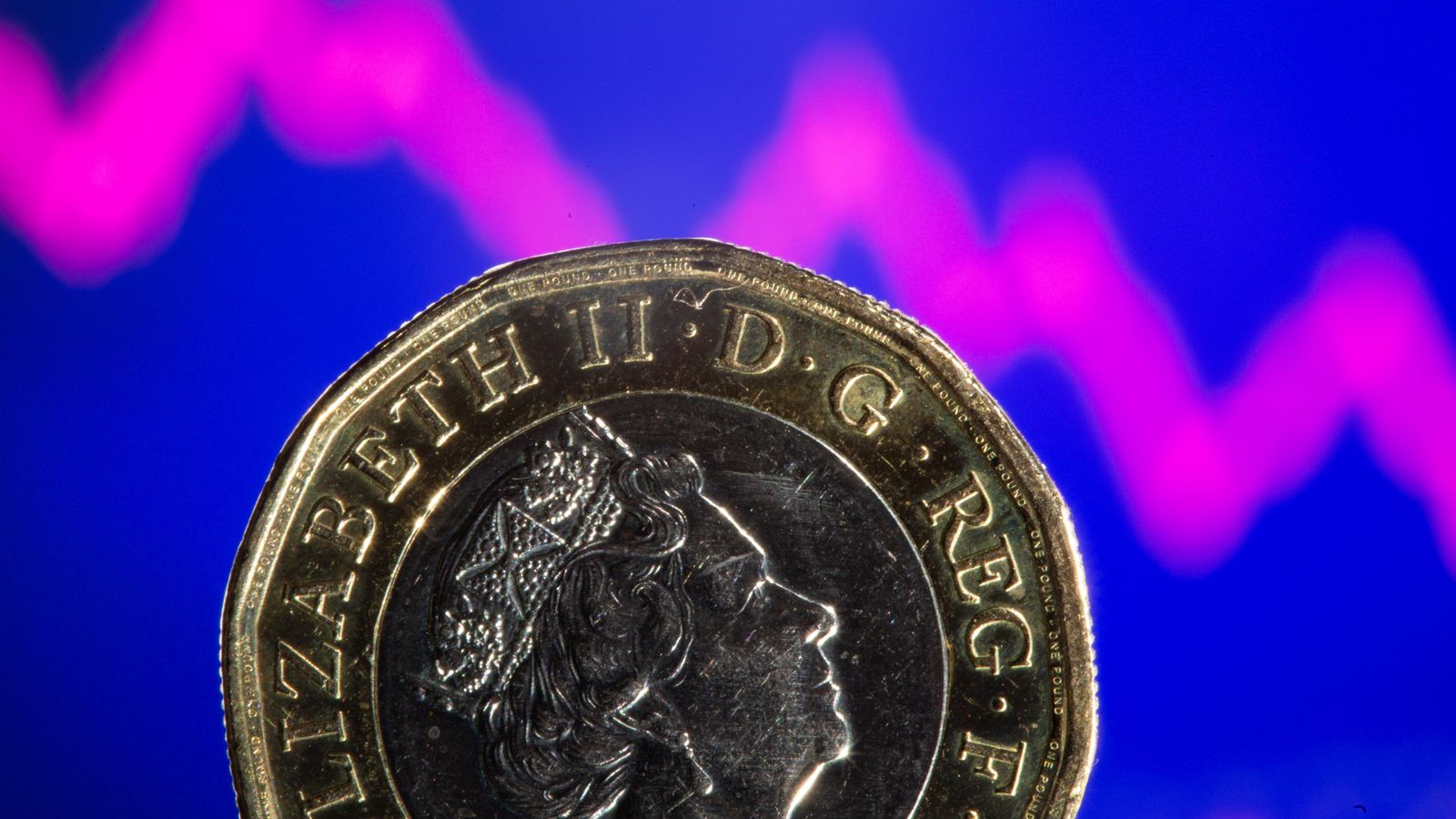The pound and government bond yields have recovered some poise in the wake of the government’s U-turn on abolishing the top rate of income tax.
Kwasi Kwarteng revealed early on Monday morning that the decision to axe the 45p rate – part of his growth plan revealed last month – would now not happen in April as he had announced just 10 days ago.
Interest rate forecasts change after tax U-turn – economy latest
The measures were badly received by the financial markets as they were seen as placing too much strain on the public finances, with the tax cuts set to cost £45bn alone.
The crisis of confidence saw sterling hit record lows against the dollar a week ago while the Bank of England later had to intervene to restore market functionality for pension funds when long-dated government bond yields surged.
The yield – the effective interest rate demanded by investors to buy UK government debt – on the 30-year bond had nudged to levels not seen since 2002 before the Bank said it would buy bonds to support the market.
Monday’s government climbdown saw the yield, briefly, climb back to where it was ahead of the mini-budget.
The same could be said for the pound.
But market commentators cautioned that it was likely some respite only.
AJ Bell’s investment director, Russ Mould, noted that sterling had jumped from $1.1088 to $1.1264 in less than two hours on Monday morning.
“The U-turn is important for two reasons”, he wrote.
“First, the market was panicking about the cost of the tax cuts and how that would push up government debt and in turn raise the prospect of reduced public spending and benefit cuts.
“Removing one of the key components of this seemingly flawed plan provided some relief, and you saw that in how the pound rallied and 10-year gilt rates briefly fell below 4%.
Economics & data editor
It’s hard to think of another episode like this.
There have been Budget U-turns before but it’s hard to think of any which came so soon after they were announced and were not just an obscure technical consequence of a bigger measure (for instance George Osborne’s pasty tax).
The question now, however, is whether this change of mind changes the mind of the millions of investors who have, in the past week, been eschewing UK investments. That resulted in a fall in the pound and a sharp increase in government borrowing rates.
Yet – and this is something those inside Number 10 have pointed out themselves – the removal of the 45p rate was not all that expensive, when compared to the other bits of the mini-budget: around £2bn of a total £45bn package.
They saw no arithmetic link between the measure in numerical terms and the reaction from currencies and bonds.
The most straightforward conclusion, then, was that rather than responding to this 45p rate, investors seemed instead to be responding to something broader: a crisis of confidence in the government’s economic leadership.
Whether the abolition of the 45p rate is enough to change that view remains to be seen.
“The other factor to consider is that Kwarteng has effectively admitted to a massive policy error only weeks into his tenure as chancellor.
“If Liz Truss is to establish any credibility as prime minister, can she afford to have anyone on her team who has effectively scored an own goal in the opening game?
Please use Chrome browser for a more accessible video player
“The fact that both the pound fell back and gilt rates started to move higher after the news had been digested is the market’s way of saying there are still plenty of problems with the government’s finances, state of the consumer and business, and economic outlook.
“With or without the 45% tax cut, the country still faces challenging times with individuals and companies finding life a lot harder.”
He noted that the FTSE 100 fell 1% to 6,827 – dragged down by miners, financial services and consumer goods firms.
“Many of these earn in dollars and so a stronger pound – if even if it just a temporary move – is bad for them”, he explained.




